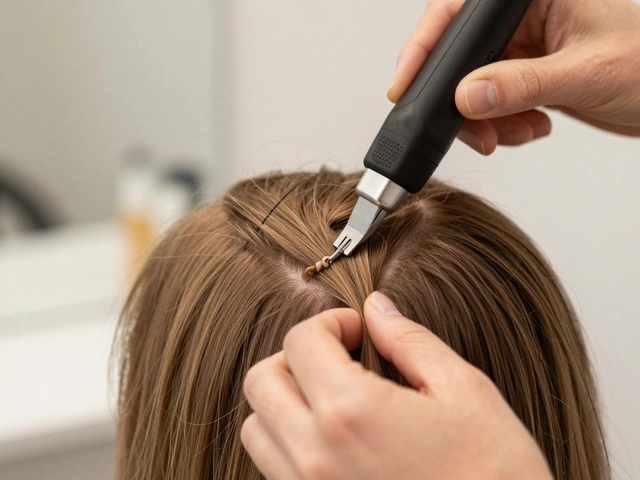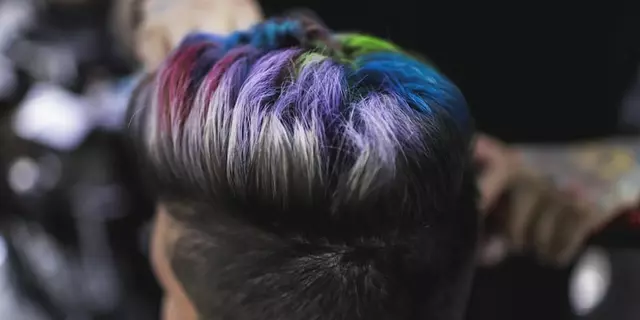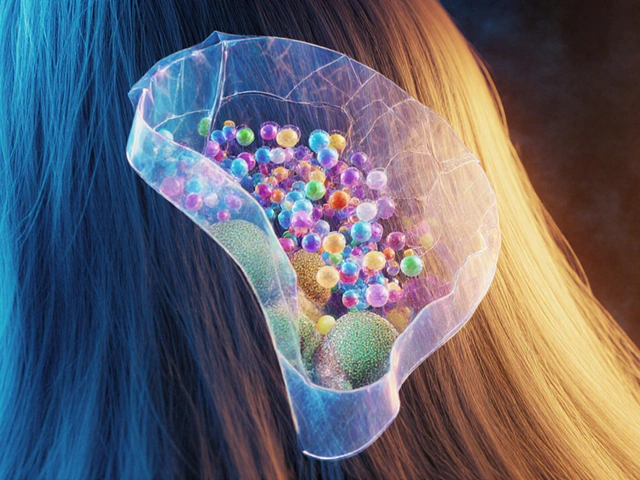Nothing kills the look of Bellami tape-in hair extensions faster than dry, brittle strands. You invested in high-quality human hair, spent time getting them installed properly, and now they’re looking dull, frizzy, or even tangled? That’s not normal. Dry extensions aren’t just ugly-they’re fragile. And once they start breaking, you’re looking at a costly replacement. The good news? Keeping your Bellami extensions soft, shiny, and healthy isn’t rocket science. It just takes a few smart habits you can start today.
Stop Washing Them Like Your Natural Hair
Most people think the more they wash their extensions, the cleaner they stay. That’s the biggest mistake. Bellami extensions are made from 100% human hair, but they don’t have scalp oil flowing through them like your own hair does. That means they don’t get the natural moisture your scalp provides. Washing too often strips away what little moisture they have left.Wash your extensions only once every 10 to 15 wears. If you’re active, sweaty, or use a lot of product, you can go up to once a week-but never daily. Use a sulfate-free, hydrating shampoo. Avoid anything labeled "clarifying" or "volumizing." Those are designed to strip oils, and your extensions don’t have any to spare.
When you do wash, rinse with cool water. Hot water opens the cuticle and lets moisture escape. Cool water seals it in. Gently massage the shampoo into the mid-lengths and ends. Never scrub the tape tabs. That’s where the bond lives. If you damage the tape, the extension falls out-and you’re back to square one.
Conditioning Is Non-Negotiable
You wouldn’t skip conditioner on your natural hair. Don’t skip it on your extensions either. But here’s the catch: not all conditioners are created equal. Avoid anything with heavy silicones like dimethicone or cyclomethicone. They coat the hair, making it feel smooth at first, but over time they build up and block moisture from getting in. That leads to dryness underneath the buildup.Look for conditioners with ingredients like argan oil, shea butter, coconut oil, or panthenol. These actually nourish the hair. Apply conditioner from the mid-lengths down to the ends. Don’t put it on the tape tabs. Let it sit for 3 to 5 minutes, then rinse thoroughly. You can even do a deep conditioning treatment once a week. Just leave it on for 20 minutes under a shower cap. It makes a noticeable difference in softness and shine.
Use Leave-In Conditioner-But Not Too Much
A lightweight leave-in conditioner is your best friend. It adds daily moisture without weighing hair down. Pick one designed for extensions or fine hair. Spray it lightly on the mid-lengths and ends after washing and towel-drying. Avoid the root area and tape tabs. Too much product near the tape can cause slippage.One common mistake? People think more product = more hydration. That’s not true. Overloading extensions with leave-in sprays or serums leads to greasy buildup, tangling, and even tape failure. A few spritzes are enough. If your hair feels sticky or looks shiny at the roots, you’ve used too much.

Heat Is the Enemy
Flat irons, curling wands, and blow dryers are tempting when you want to style your extensions. But heat is one of the top causes of dryness. Human hair can handle some heat, but extensions are already processed. They’ve been bleached, colored, and treated. They’re more vulnerable than your natural hair.Always use a heat protectant spray before any heat styling. Look for one with argan oil or keratin. Set your tools to 350°F (175°C) or lower. Anything higher than that risks frying the hair. And never use high heat on dry extensions. Always make sure they’re damp or lightly misted before you style.
If you’re not styling daily, skip the heat altogether. Air-drying your extensions saves their life. Let them air-dry after washing, and use a wide-tooth comb to gently detangle while they’re still wet. That reduces breakage and keeps them looking smooth.
Brushing Right Matters More Than You Think
Brushing your extensions the wrong way is like pulling on a tangled knot. It causes breakage and makes dryness worse. Never brush them when they’re dry and tangled. That’s when hair snaps.Always brush from the bottom up. Start at the ends, gently work out tangles with your fingers or a wide-tooth comb, then move up slowly. Use a brush made for extensions-like a Tangle Teezer or a vent brush with soft bristles. Don’t use a regular paddle brush or boar bristle brush. They’re too harsh.
Brush your extensions once in the morning and once at night. That’s it. Over-brushing creates friction, which dries out the hair. And never sleep with wet extensions. That causes matting and breakage. If your hair is damp at night, twist it loosely into a bun on top of your head and sleep on a silk pillowcase.
Silk Pillowcases Are a Game-Changer
Cotton pillowcases are rough. They rub against your hair all night, pulling at the strands and stripping moisture. That’s why your extensions feel dry in the morning-even if you did everything right the night before.Switch to a silk or satin pillowcase. They’re smooth, reduce friction, and help retain moisture. You’ll notice less frizz, fewer tangles, and less breakage. It’s one of the cheapest, easiest upgrades you can make. And you don’t need to buy expensive silk-look for 100% polyester satin. It works just as well and costs less.

Avoid These Common Mistakes
Here are the top mistakes people make that dry out Bellami extensions:- Using alcohol-based products (like hairspray or dry shampoo) near the tapes
- Swimming without protecting your hair (chlorine and saltwater are brutal)
- Wearing tight ponytails or braids that pull on the tape tabs
- Leaving extensions in too long without maintenance (over 8 weeks)
- Using regular conditioner on the tape area
If you use dry shampoo, spray it on your scalp only-not the extensions. If you swim, wet your hair with fresh water first, then put on a swim cap. After swimming, rinse immediately with clean water and follow up with a hydrating conditioner.
When to Replace Your Extensions
Even with perfect care, Bellami tape-ins last about 6 to 8 weeks. After that, the hair starts to thin out, the color fades, and the tapes lose their grip. If your extensions are dry, brittle, and tangled even after proper care, it’s time to replace them.Don’t try to extend their life past 8 weeks. The damage becomes permanent. You’ll end up with split ends, uneven texture, and hair that looks cheap. Replacing them on schedule keeps your look fresh and your investment protected.
Quick Daily Routine to Keep Extensions Moist
Here’s a simple daily habit to keep your Bellami extensions hydrated:- Brush gently with a soft extension brush
- Apply 1-2 spritzes of leave-in conditioner to the ends
- Sleep on a silk pillowcase
- Avoid heat unless absolutely necessary
- Wash only every 10-15 days with sulfate-free shampoo
Do this consistently, and your extensions will look like they’re fresh out of the salon-even after months of wear.
Can I use coconut oil on Bellami hair extensions?
Yes, but use it sparingly. Pure coconut oil is great for deep conditioning, but it’s heavy. Apply a small amount (about the size of a pea) to the ends only, leave it on for 20 minutes, then wash out thoroughly. Don’t use it daily-it can weigh hair down and build up near the tapes.
Why do my tape-in extensions get tangled so fast?
Tangling usually happens because of dryness, friction, or brushing wrong. If your extensions aren’t moisturized, the cuticles lift and catch on each other. Sleeping on cotton, brushing from the top down, or skipping conditioner all cause this. Fix it by conditioning regularly, brushing from the bottom up, and using a silk pillowcase.
Can I use a regular shampoo on Bellami extensions?
No. Regular shampoos contain sulfates that strip moisture and damage the hair cuticle. Bellami extensions are already processed, so they need gentle, sulfate-free formulas. Look for shampoos labeled "for color-treated hair" or "for extensions." They’re designed to preserve moisture and color.
Should I avoid saltwater and chlorine?
Yes. Saltwater and chlorine dry out human hair faster than anything else. If you swim, wet your hair with fresh water first, then wear a swim cap. After swimming, rinse immediately with clean water and follow up with a hydrating conditioner. Don’t wait-it’s the difference between healthy hair and damaged strands.
How often should I get my tape-ins moved up?
Every 6 to 8 weeks. As your natural hair grows, the tapes pull away from the scalp. If you wait too long, the tension can cause breakage or damage to your own hair. A professional should remove and reapply the extensions at this point to keep everything healthy and secure.







Tiffany Ho
November 4, 2025 AT 21:14I used to wreck my extensions every other week until I started sleeping on satin. No joke, it’s like night and day. I didn’t even know pillowcases could make that much difference.
Now I just brush them gently, spray a little leave-in, and call it a day. So simple.
Also never wash them more than once a week. I used to wash daily like my own hair and wondered why they looked like straw.
michael Melanson
November 6, 2025 AT 05:29Heat protectant is non-negotiable. I learned this the hard way after flat ironing my extensions on high and frying half of them. Now I keep it at 350 and always mist them first. Game changer.
lucia burton
November 7, 2025 AT 07:03Let me just say that the entire paradigm of hair extension maintenance is fundamentally misunderstood by the majority of users who treat human hair extensions like synthetic fibers. The biological reality is that without sebum production, the cuticle integrity degrades exponentially faster than natural hair, which is why sulfate-free, pH-balanced hydration protocols are not optional-they are the cornerstone of structural preservation.
Moreover, the mechanical stress from improper detangling techniques induces microfractures in the cortex, leading to irreversible protein loss. This is why the bottom-up brushing methodology, coupled with silk substrate friction reduction, constitutes a biomechanical imperative rather than a mere suggestion. And let’s not even get started on the chemical assault of chlorine and saltwater without pre-hydration protocols. You’re not just damaging hair-you’re compromising the entire tensile architecture of the extension system.
Denise Young
November 7, 2025 AT 16:42Oh so now we’re pretending that ‘sulfate-free shampoo’ is some magical elixir and not just marketing nonsense? Let me guess-you also believe that ‘paraben-free’ means it’s safe and ‘natural’ means it doesn’t contain synthetic ingredients?
Look, I’ve had Bellami for three years. I wash them every 5 days with my regular shampoo, sleep on cotton, and use a cheap brush. They still look better than 90% of the girls in my office. Maybe the real issue is that people overthink this too much.
Also, silk pillowcases? Cute. I’ll stick to my $3 Target ones and my $200 extensions. They’ve earned it.
Sam Rittenhouse
November 9, 2025 AT 16:38I just want to say thank you for writing this. I was about to toss my extensions because they felt so brittle and I thought I’d ruined them. I started following your routine-cool water, leave-in spray, silk pillowcase-and two weeks later, they looked brand new again. I cried. Not exaggerating. It’s like they came back to life.
And to anyone thinking ‘this is too much work’-it’s not. It’s five minutes a day. Your hair deserves that. You deserve that.
Peter Reynolds
November 10, 2025 AT 23:10I’ve been using coconut oil once a week on the ends only. Works fine. Just don’t get it near the tapes. That’s the only rule I follow. Everything else is extra.
Fred Edwords
November 11, 2025 AT 04:14Correction: The article states, 'Wash your extensions only once every 10 to 15 wears.' However, 'wears' is not a standard unit of measurement-it is colloquial and ambiguous. It should read 'worn days' or 'uses' for clarity. Additionally, the phrase 'never scrub the tape tabs' should be 'never scrub the tape tabs,' as 'tabs' is plural and requires no apostrophe. Also, '350°F (175°C)' is correctly formatted, but the parenthetical should use a non-breaking space: '350°F (175°C)' for typographic precision. Minor, but important.
Sarah McWhirter
November 12, 2025 AT 14:00Did you know that the entire hair extension industry is run by Big Hair? They want you to buy new extensions every 8 weeks so they can keep profiting. That’s why they tell you to replace them so often. The truth? You can stretch them to 12 weeks if you just use a little more conditioner and skip the ‘professional maintenance’ scams.
Also, silk pillowcases? That’s just a fancy way of selling you something you don’t need. Cotton is fine. Your hair doesn’t care. They just want your money.
And why is everyone so scared of sulfate? Sulfates clean. They don’t destroy. It’s all fear-mongering. I’ve used Head & Shoulders on my extensions for years. Still look great. Just saying.
Ananya Sharma
November 14, 2025 AT 08:46Let me be the first to say this: all of this advice is completely useless unless you’re already using 100% Remy hair from a verified source. Most Bellami extensions on the market are actually recycled hair from India or China that’s been bleached and dyed three times. No amount of coconut oil or silk pillowcases will fix that. You’re not maintaining hair-you’re maintaining a lie.
And the real reason extensions dry out? Because they’re not even human hair. They’re synthetic blends disguised as human. The industry knows it. You don’t. And now you’re spending hundreds on a product that’s engineered to fail after 8 weeks. Wake up.
Also, why is everyone so obsessed with ‘tape-in’? Clip-ins last longer and don’t damage your scalp. But no, you’d rather risk hair loss for the ‘natural look.’ Pathetic.
kelvin kind
November 15, 2025 AT 00:03Just use leave-in and sleep on silk. That’s it. Everything else is noise.
Ian Cassidy
November 16, 2025 AT 06:51Deep conditioning once a week is the secret sauce. I use a mask with shea butter and leave it on for 30 minutes under a shower cap. My extensions go from frizzy to glossy like magic. And I don’t even wash them that often-maybe every 12 days. Works like a charm.
Zach Beggs
November 16, 2025 AT 23:14Good tips. I’ve been doing most of this already. Only thing I’d add is to avoid hairspray near the tapes. I learned that the hard way when one came loose after I sprayed too close. Lesson learned.
Tiffany Ho
November 17, 2025 AT 13:12Wait I just realized-I’ve been using dry shampoo on my scalp but letting the spray drift down to the tapes. No wonder one side kept slipping!
Thanks for the reminder. Going to start spraying only on my roots now.